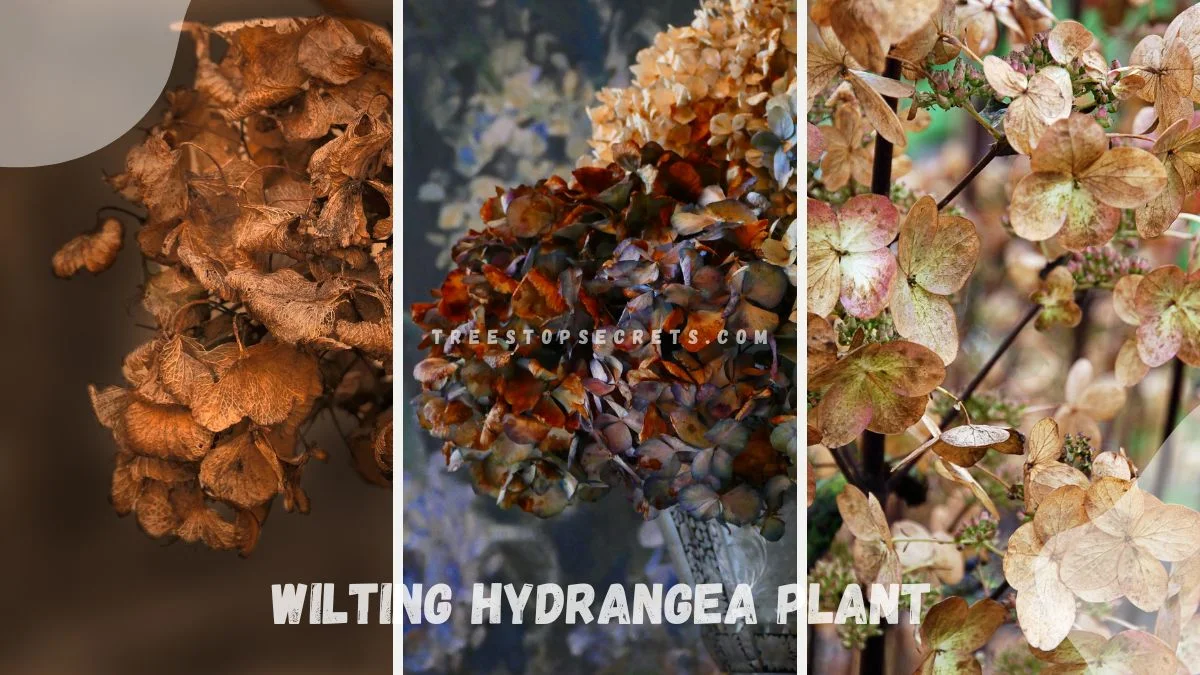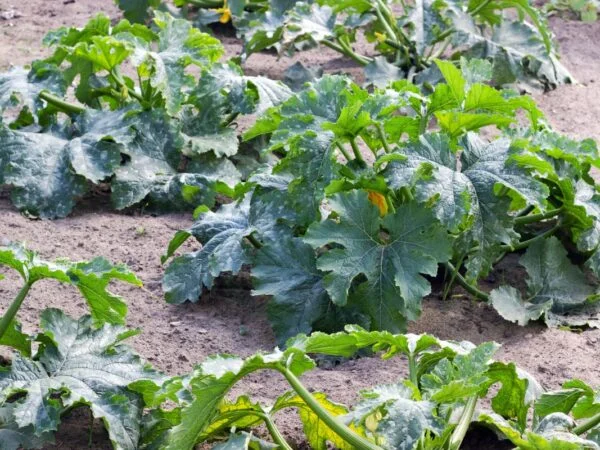Are you worried about your wilting hydrangea plant? I can help you bring it back to life. Hydrangeas are stunning garden additions, but they can be prone to wilting if not properly cared for. Whether it's due to watering issues, pests, or environmental stress, identifying the cause of your hydrangea's wilting is the first step to recovery. With a few simple steps and careful attention, you can restore your plant’s vibrant health and enjoy its beautiful blooms once again. Let's get your hydrangea thriving!
Wilting in hydrangea plants is often due to improper watering, extreme temperatures, or pests. Ensure consistent soil moisture without waterlogging, and protect the plant from intense heat or cold. Check for pests like aphids or spider mites, and treat infestations promptly. Pruning dead or diseased branches can also encourage healthy growth. These basic care practices can help prevent wilting and maintain the vitality of your hydrangea. Here’s a quick comparison:
| Cause | Solution |
|---|---|
| Improper Watering | Water regularly, avoid waterlogging |
| Extreme Temperatures | Provide shade or cover as needed |
| Pests | Use insecticidal soap or neem oil |
| Dead/Diseased Branches | Prune to encourage growth |
There's much more to learn about maintaining a healthy hydrangea. Dive deeper into our comprehensive guide for detailed care tips and solutions to common problems.
Key Takeaways
- Water Wisely: Ensure your hydrangea plant is adequately watered to prevent wilting, especially during hot and dry periods.
- Provide Shade: Shield your hydrangea from excessive sun exposure to avoid wilting and leaf damage.
- Protect from Wind: Shield your hydrangea from strong winds that can dry out the plant and cause wilting.
- Balanced Nutrition: Avoid over-fertilizing with nitrogen to prevent wilting and promote healthy growth.
- Handle Transplant Shock: Minimize stress on your hydrangea during transplanting to prevent wilting and aid recovery.
- Long-Term Care: Implement consistent care practices like proper watering, suitable sun exposure, and balanced nutrition to maintain a thriving hydrangea plant.
Understanding Hydrangea Wilting
Common Causes
Lack of Water: Hydrangea wilt often occurs due to insufficient water supply, making it crucial to ensure adequate hydration.
- Shallow Watering Impact: Hydrangeas suffer when only the surface of the soil is moistened, leading to wilting.
- Planting Conditions: Properly planting hydrangeas in moist, nutrient-rich soil is essential to prevent wilting issues.
Symptoms to Watch
Wilting Signs: Keep an eye out for drooping leaves, flowers, and stems as indicators of a problem with your hydrangea plant.
- Visual Cues: Look for drooping flowers and leaves that appear lifeless, signaling potential dehydration.
- Dehydration Alert: Wilting can serve as a warning sign of dehydration in hydrangeas, prompting immediate action.
Importance of Early Detection
Early Detection Significance: Detecting and addressing wilting early on is crucial to prevent severe damage to your hydrangea plant.
- Preventing Damage: Acting promptly upon noticing signs of wilting can save your plant from irreversible harm.
- Quick Restoration: Swift action is key to reviving ailing hydrangeas and restoring them to health.
Lack of Water
Spotting Signs
Hydrangeas show visible signs of wilting when lacking water, such as drooping leaves and flowers. Differentiate between normal wilting due to heat and abnormal wilting from moisture loss. Recognize dry soil by sticking a finger in it.
e symptoms of plant distress due to lack of water include leaves turning brown, crispy edges, and flower heads drooping. Observe the plant for changes in appearance and texture to detect wilting early.
Quick Solutions
To revive wilted hydrangeas, provide deep watering directly at the base of the plant. Ensure the water reaches the roots for effective hydration. Add organic matter like compost or mulch to improve moisture retention in the soil quickly.
For potted hydrangeas, rescue them by watering daily to maintain consistent moisture levels. Avoid slow watering methods that don't penetrate the root zone effectively.
Prevention Tips
Prevent wilting by deep watering hydrangeas regularly to keep the soil moist. In spring, apply a layer of mulch around the plants to retain moisture and regulate temperature. Gradually incorporate organic matter into the soil to enhance moisture retention over time.
Excess Sun Exposure
Identifying Damage
Wilting in hydrangeas can be identified by drooping leaves and flowers, along with dry, crispy edges on the foliage. This damage can lead to stunted growth and reduced flowering in the plant. To assess the extent of damage, check for signs of dehydration like wilted, yellowing leaves.
Shade Solutions
Excessive exposure to full sun can cause hydrangeas to wilt due to increased transpiration and water loss. By moving the plants to an area with partial shade, you can provide relief from intense sunlight. Providing shade during peak hours helps prevent wilting and maintains the plant's health.
- Moving plants to partial shade
- Preventing wilting during peak hours
Adjusting Plant Location
To prevent wilting caused by too much sun exposure, consider relocating hydrangeas to a spot that offers partial shade throughout the day. Finding a suitable location with limited direct sunlight is crucial for the plant's health. Proper plant location plays a vital role in ensuring optimal growth and preventing wilting.
- Relocating hydrangeas for shade
- Importance of suitable plant location
Wind Effects
Recognizing Wind Stress
Hot winds can cause hydrangeas to lose moisture rapidly, leading to wilting. Signs of wind stress include drooping leaves and dry soil. Providing wind protection is crucial for maintaining plant health.
When hydrangeas are exposed to strong weather, their stems may become weak, and flowers might wilt prematurely. To identify wind stress, look for dried-out petals and browning edges on leaves. Protecting hydrangeas from harsh conditions is essential for their well-being.
Creating a barrier against the wind by planting natural windbreaks like shrubs or trees can shield hydrangeas from excessive heat and fall gusts. This helps maintain soil moisture levels and prevents wilting in the landscape.
Protective Measures
To safeguard hydrangeas from damaging winds, consider relocating them to sheltered areas during windy periods. Moving plants to a spot where they are shielded from direct wind exposure can prevent wilted landscape and preserve their health.
During scorching summers, it's vital to shield hydrangeas from hot winds that can accelerate moisture loss. Planting near fences or walls can provide a protective barrier against strong gusts, preserving the blooms' vitality.
Planting hydrangeas in locations that offer natural protection from prevailing winds can significantly reduce the risk of wilting. Proper positioning in a garden with adequate wind cover ensures that the plants thrive without being subjected to excessive stress.
Suitable Sheltering
Providing suitable shelter for hydrangeas is key to protecting them from the detrimental effects of strong winds. Shelters can include structures like pergolas or planting them near buildings for added protection.
Sheltering hydrangeas helps maintain optimal soil moisture levels by reducing evaporation caused by continuous wind exposure. This practice ensures that the plants remain hydrated and vibrant throughout the growing season.
Creating a microclimate around hydrangeas by strategically placing them in areas shielded from harsh winds enhances their overall health and longevity. Adding mulch around the base of the plants further aids in retaining moisture and preventing wilting.
Excess Nitrogen Problems
Spotting Overfertilization
Overfertilization can lead to wilting in hydrangeas by causing nutrient imbalances and root damage. Signs of excess nitrogen include stunted growth, yellowing leaves, and burnt leaf edges. Detect fertilizer runoff by observing water discoloration around plants.
Balancing Soil Nutrients is crucial for hydrangeas to thrive. Proper nutrient levels prevent wilting by maintaining plant health and hydration. To maintain a healthy soil environment, ensure proper drainage, pH levels, and organic matter content.
Fertilizer Selection
Selecting the right fertilizers is essential to prevent wilting in hydrangeas. The wrong fertilizer choice can harm plant health by causing nutrient deficiencies or toxicities. Opt for balanced fertilizers with equal ratios of nitrogen, phosphorus, and potassium.
Transplant Shock Management
Identifying Shock Signs
Transplant shock in hydrangeas can be recognized through symptoms like wilting leaves, yellowing foliage, and drooping stems. These signs indicate plant distress due to the transplantation process. Hydrangeas experiencing shock may show stunted growth and lackluster blooms.
Recovery Steps
To help hydrangeas recover from wilting, immediate action is crucial. Begin by ensuring proper watering to rehydrate the plant. Trim any damaged or wilted leaves to encourage new growth. Consider applying a balanced fertilizer to boost recovery post-shock.
Preventing Future Shock
To prevent future shock episodes in hydrangeas, avoid transplanting during extreme weather conditions. Ensure plants are well-watered before and after transplantation to reduce stress. Implement a regular fertilization schedule to strengthen plant resilience against shock. Provide adequate sunlight and soil drainage for optimal growth.
Long-Term Care Strategies
Regular Maintenance
Maintaining healthy hydrangeas requires consistent care to prevent wilting. Regular watering, pruning, and fertilizing are crucial. Checking for pests and diseases is also essential. A maintenance checklist can ensure optimal plant health:
- Watering: Ensure hydrangeas receive adequate water, especially during dry spells.
- Pruning: Trim dead or damaged branches to promote new growth.
- Fertilizing: Use a balanced fertilizer to provide necessary nutrients.
- Pest control: Monitor for pests like aphids and treat promptly if detected.
Consistent care plays a vital role in preventing wilting in hydrangeas. By following a maintenance checklist, you can keep your plants healthy and vibrant.
Seasonal Care Tips
Adjusting care routines based on seasonal changes is key to preventing wilting in hydrangeas. Different seasons impact plant health differently. Here are some seasonal care tips:
- Spring: Focus on promoting new growth with proper pruning and fertilization.
- Summer: Ensure hydrangeas receive enough water and protection from intense sunlight.
- Fall: Prepare plants for winter by reducing watering and applying mulch for insulation.
- Winter: Protect plants from frost by covering them or moving them indoors if necessary.
Understanding the impact of seasonal changes on hydrangea health allows you to provide appropriate care throughout the year.
Monitoring Plant Health
Regularly monitoring hydrangea health is essential for preventing wilting. Early detection of issues can help address problems before they worsen. Benefits of monitoring plant health include:
- Early intervention: Detecting issues early allows for prompt treatment.
- Disease prevention: Regular inspections help prevent diseases from spreading.
- Optimal growth: Observing changes in hydrangeas ensures they receive proper care.
Summary
Understanding the reasons behind your wilting hydrangea plant is crucial for nursing it back to health. Whether it's a lack of water, excessive sun exposure, wind effects, or nitrogen problems, knowing the root cause empowers you to take targeted action. From managing transplant shock to implementing long-term care strategies, each step plays a vital role in revitalizing your plant and ensuring its well-being.
To revive your hydrangea and witness it bloom vibrantly once again, make sure to address the identified issues promptly. Adjust watering schedules, provide adequate shade, shield from strong winds, and balance nitrogen levels. By following these tailored care tips, you can enjoy a lush and thriving hydrangea garden in no time.
Frequently Asked Questions
How to Identify Hydrangea Wilting?
Hydrangea wilting is characterized by drooping or curling leaves, dry and brittle stems, and overall lack of turgor pressure in the plant. Check for discolored or yellowing leaves as well.
What Are the Causes of Excess Sun Exposure on Hydrangeas?
Excess sun exposure can lead to wilting in hydrangeas due to increased transpiration, causing the plant to lose water faster than it can absorb. This can result in dehydration and stress on the plant.
How Does Wind Affect Hydrangea Plants?
Strong winds can damage hydrangea plants by causing excessive water loss through transpiration, leading to wilting. Wind can also physically break or bend the stems and branches of the plant, impacting its overall health.
How Does Excess Nitrogen Impact Hydrangea Health?
Excessive nitrogen can promote lush foliage growth at the expense of flower production in hydrangeas. This imbalance can lead to weakened stems unable to support the weight of the blooms, resulting in wilting and overall poor plant health.
What Are Effective Long-Term Care Strategies for Hydrangeas?
Long-term care for hydrangeas involves maintaining a consistent watering schedule, providing adequate shade during hot periods, ensuring proper soil drainage, avoiding over-fertilization, and regular pruning to promote healthy growth and prevent wilting issues.
Image Source: Paid image from CANVA





